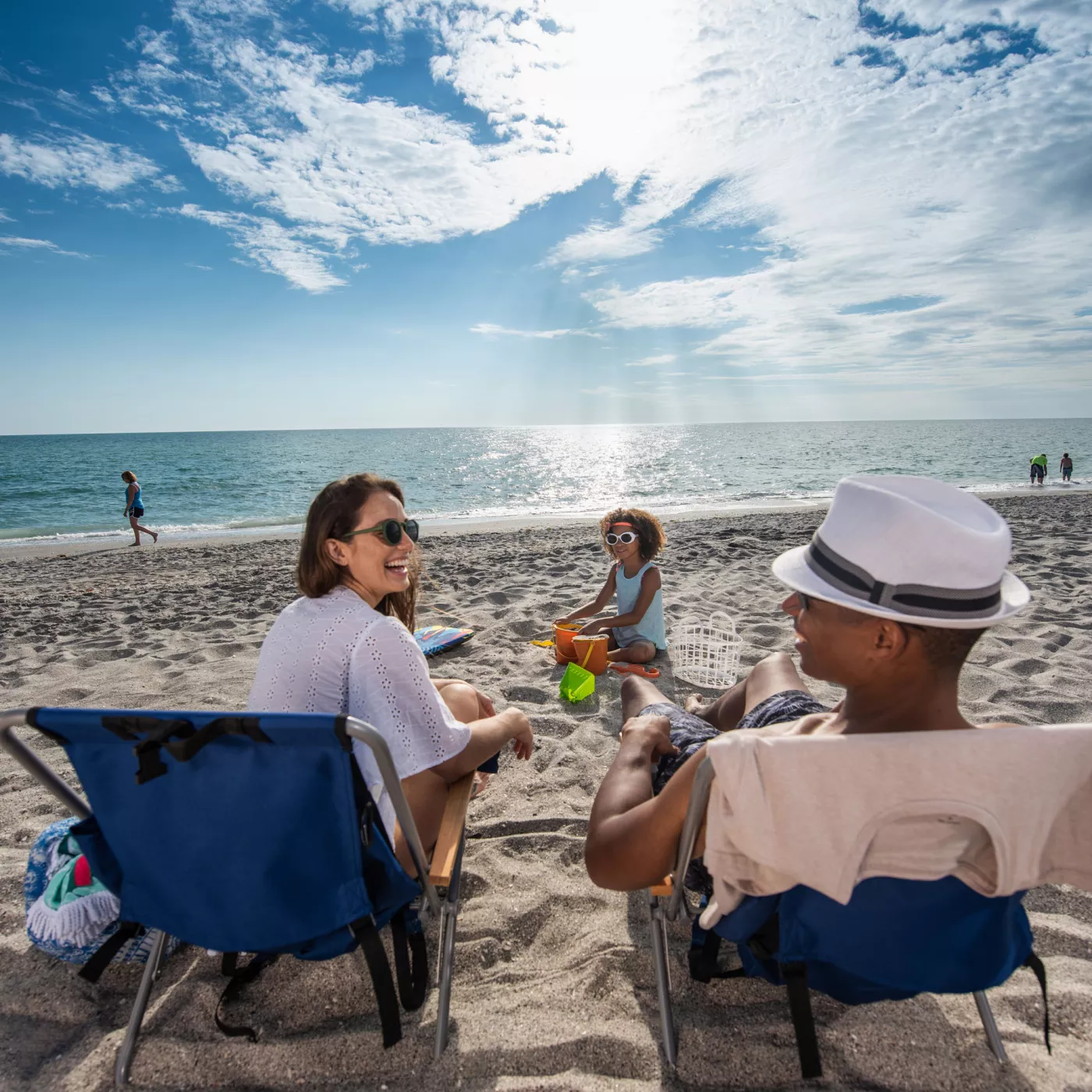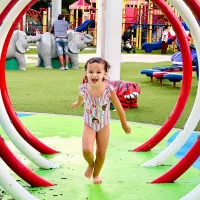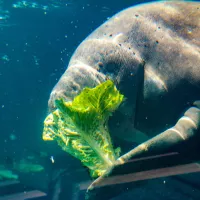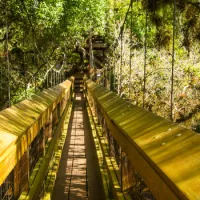Blooming Beauties: Top Garden Spots in Sarasota
Garden lovers should plant themselves at these Sarasota County spots
Garden lovers should plant themselves at these Sarasota County spots
Some people have green thumbs and can grow almost anything they plant. And other people—like me—are notorious plant killers who appreciate the beauty of gardens cultivated and cared for by folks who know how to wield a trowel and pruning shears. Whether you’re a grower yourself or just never met a flower you didn’t want to photograph, there are lots of spots in Sarasota County where you can get into the garden and admire the plant life that can sprout in these parts.
An oasis just on the edge of downtown Sarasota, Marie Selby Botanical Gardens occupies almost 15 acres on Sarasota Bay. It’s the only botanical garden in the world dedicated to the display and study of orchids, bromeliads, gesneriads, epiphytes, and tropical plants, so there’s lots to admire in that realm.
But a stroll around the scenic grounds also takes visitors through fern, bamboo, and succulent gardens and into a sprawling banyan grove that’s home to the Ann Goldstein Children’s Rainforest Garden, where pint-sized plant lovers can run and play among the trees. Folks can also explore a boardwalk that travels among mangroves and visit a tidal lagoon surrounded by a hardwood hammock.
And those larger-than-life pop art–style hibiscus flowers you might stumble upon near the bay? Those are part of the gardens’ “Warhol: Flowers in the Factory” exhibit that runs through June 30. The exhibit examines the legendary artist and his nature-themed work in conjunction with actual plant life. That means you’ll find four silkscreens entitled Flowers and other works by Warhol hanging in the gardens’ museum, plus eye-catching botanical displays throughout the site that riff off of Warhol’s love of repetition, patterns, and bright colors. Don’t miss the “War-wall” in the conservatory, a dramatic room-spanning grid made with over 600 bromeliads.
Lots of tropical plant life is also on display at Sarasota Jungle Gardens. More than 3,000 different varieties of trees and shrubs can be found at the site that’s remained a popular tourist attraction ever since its 1939 founding. Brick pathways travel throughout the gardens past specimens like a group of sky-high royal palms, a Ponderosa lemon tree that produces football-sized fruit, and the rainbow eucalyptus tree, which is located near the site’s flamingoes. When the bark peels off that tree, it creates a rainbow-like effect.
Sarasota Jungle Gardens has also planted lots of new trees recently to replace the ones it lost during Hurricane Irma. Those include fruit-bearing plants such as mango, loquat, and Barbados cherry trees, which will produce food that can be fed to the gardens’ animal residents.
You could wile away a day just wandering the grounds at the Ringling museum complex, the one-time home of circus magnate John Ringling and his wife, Mable. Its 66-acre Bayfront Gardens include tucked-away gems like the Dwarf Garden, where creepily cool stone statues peek out from among the plant life. (It’s modeled after 18th- and 19th-century Italian and German gardens.) You can find banyan trees here too (14 to be exact) and bromeliads and bougainvilleas in Mable’s Secret Garden, where she and John are buried.
Set up in a wagon-wheel shape, Mable’s Rose Garden features some 1,200 rose plants producing blooms in varying hues, shapes, and sizes. While none of the original roses Mable planted survived the Sarasota site’s period of disrepair during the 1930s and ’40s, many of the current plants are the same varieties she grew. The spot’s an Instagrammer’s dream but take note: the Ringling cuts back all of the roses every February and October, and it usually takes about six weeks for new flowers to appear.
It’s free to visit just the grounds of the Ringling. For an in-depth look, take a garden tour ($15-$20). Tours are currently offered through April 28 and start back up again in November; reservations must be made 24 hours in advance. The 90-minute walking tours take participants throughout the grounds—including to some “off the beaten path” spots—and offer info about both the botanical specimens at the site and the property’s history.
For a green space that’s more fanciful than formal, head to the Children’s Garden in Sarasota. It offers a whimsical take on the garden concept, with features like a hedge maze, a Fairy Garden with oversized mushrooms, and Fruity Oops Mountain, a colorful pile of tires kids can scramble up to pose for pictures at the summit.
But it’s not all make-believe here. Real-life winged insects visit the site’s butterfly garden. And regular classes and special events teach kids about everything from growing veggies to making crafts from garden finds.
Somewhat hidden amidst the hustle of downtown Sarasota is the Sarasota Garden Club. Open every day at no cost for visitors to enjoy, the one-acre site includes 14 themed tropical gardens and a butterfly garden filled with colorful flowering plants. Want to see what some of Sarasota’s greenest thumbs have been up to at their own homes? The club hosts its annual Gardens in Paradise Tour on March 17 ($35), which shows off some of the city’s prettiest private gardens.
Inspired to transform your own backyard? Head to the Florida House Institute in Sarasota. The site offers drop-in and docent-led tours of its green demonstration house and landscaped outdoor areas that focus on sustainability and environmentally friendly practices. Plantings include plenty of palms along with butterfly attractors like milkweed and porterweed and lots of edible fruits, herbs, and veggies. Pervious pavers and rainwater cisterns help conserve and reuse storm water.
Situated on Little Sarasota Bay, Historic Spanish Point in Osprey sheds light on the area’s prehistoric and pioneer past. But it’s also a great place to see plant life, with more than 50% of the native species found in Sarasota County represented at the site. Nature trails wind throughout the 30-acre property, leading visitors to lush spots like the sweeping Duchene Lawn and the Jungle Walk (complete with a funky but functional aqueduct). Some of the gardens, like the elegant Sunken Garden, were planted by Chicago socialite–turned–major Sarasota landowner Betha Palmer, who once lived at the site in the early 20th century.
Located in West Blalock Park, Venice’s Monty Andrews Arboretum was created in 2006 to teach the public about Florida-friendly plantings. Today dozens of trees can be found at the peaceful site a few blocks south of the heart of downtown Venice. There’s almost every kind of palm imaginable, from several towering Washington palms to a diminutive windmill palm. But visitors can also find Japanese blueberry, crape myrtle, sweetgum, and other trees. Helpful signs offer stats on growth rates, mature heights, and weather and light requirements, along with info on when flowering trees bloom. (Head to the arboretum during the spring, for example, to catch the yellow jacaranda awash in its namesake color or during the summer to see the weeping hibiscus in its full glory.)
In North Port, the 16-acre Garden of the Five Senses gives visitors a sensory experience meant to encourage an appreciation of nature. Wheelchair-accessible concrete pathways wander past native plantings that attract butterflies and other wildlife. A small waterfall provides soothing background noise, while a ground-level sundial lets visitors use their own shadows to tell the time. Small pavilions and porch-style swings offer spots for sitting and enjoying the serene setting.

![Boat parking at The Crow’s Nest in Venice [Photo: Lauren Jackson]](/sites/default/files/styles/popular_stories_teaser/public/2023-import/The-Crow%2527s-Nest-cropped__OPT.jpg.webp?itok=ycs37M-O)



